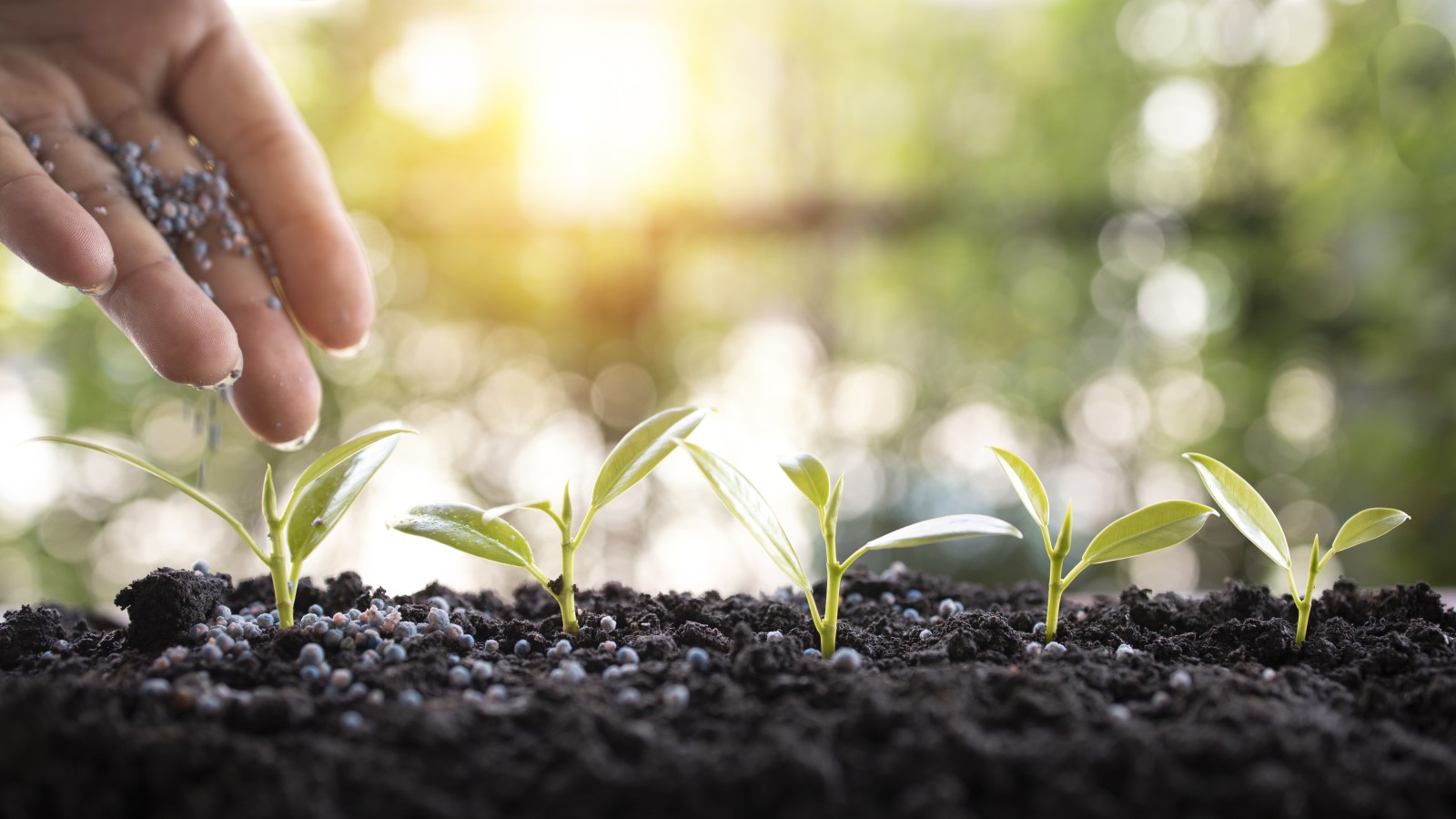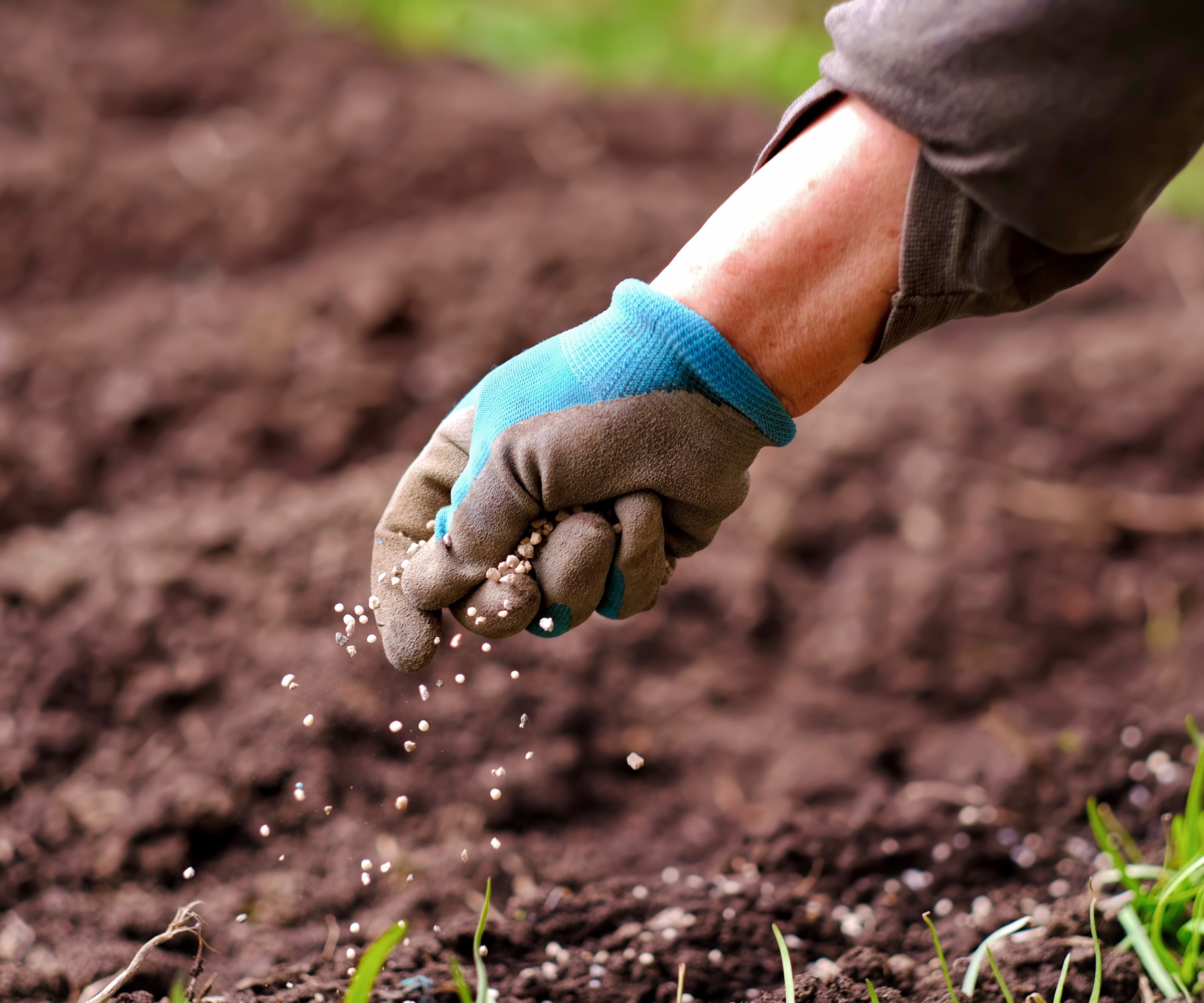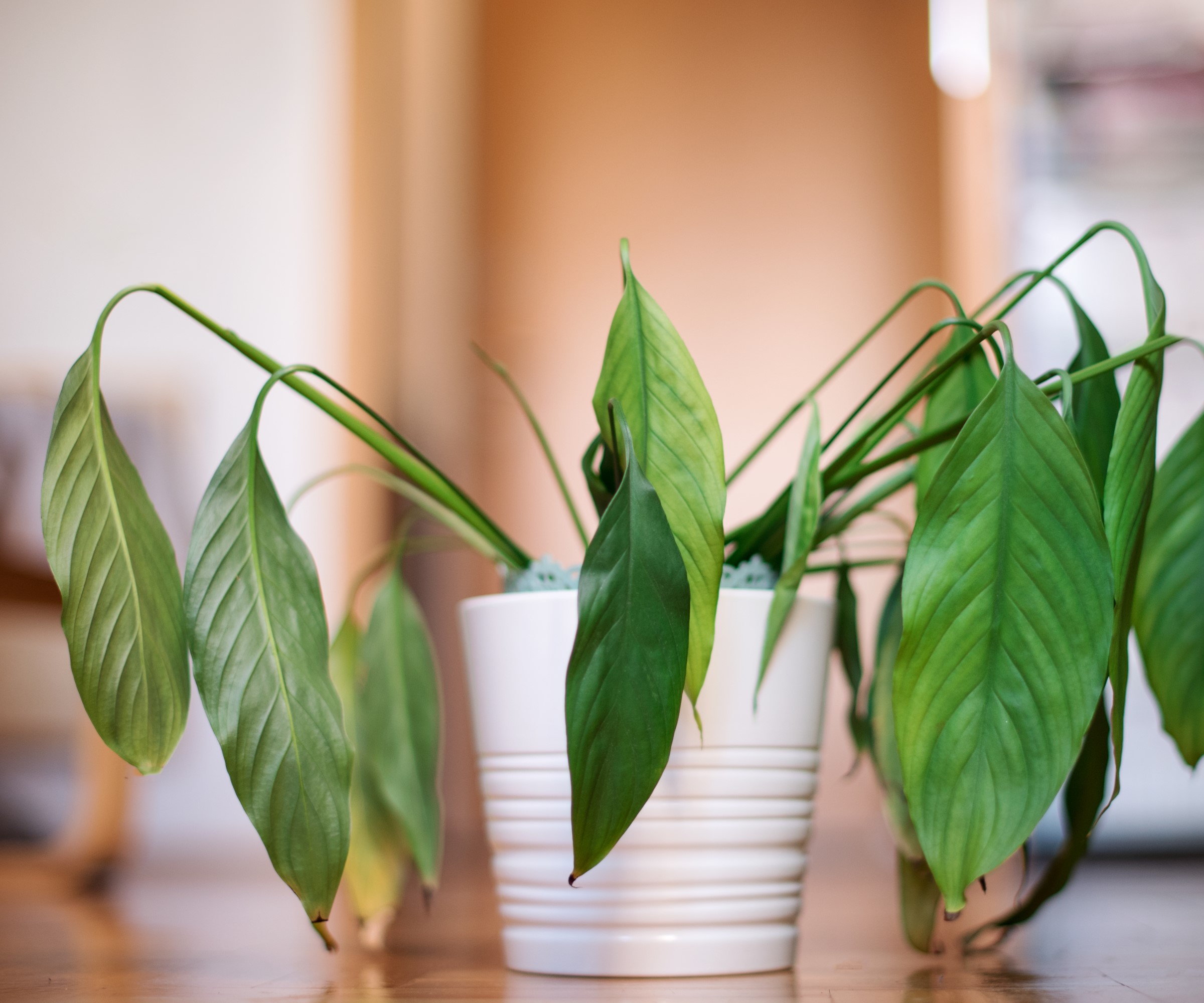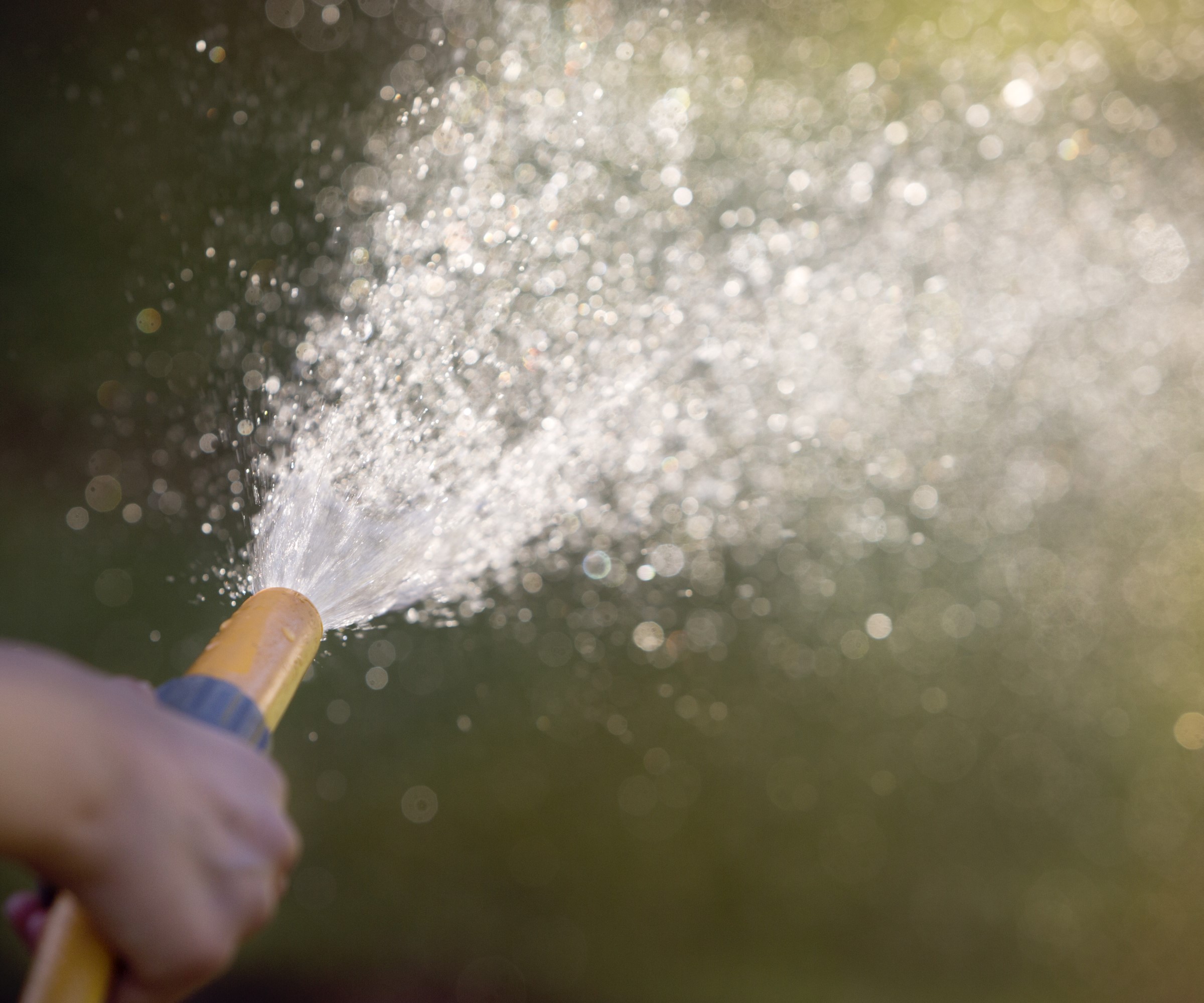Can you over-fertilize plants? Experts reveal the warning signs to watch out for
Plants can end up discolored, stunted, or even perishing due to over-fertilizing


Feeding plants is an important part of looking after them and it is key to keep them producing flowers, vegetables or fruit. However, being too eager and over-fertilizing plants is easily done and can lead to myriad potential issues.
Your plants will let you know if you over-fertilize them. They will show the scars of their roots being burnt by a buildup of excess nutrients in the soil in the form of discolored leaves, stunted growth, or shed foliage. You will even see crust from over-fertilizing on the soil.
Rest assured, however, that you can rescue plants that have been overfed and they can recover fairly quickly. It pays to understand plant fertilizer numbers and nutrient make-up of any feed and always apply it at the recommended rate. You may think a little bit more will do no harm, but it can, and plants can be killed by over-fertilizing.

Fertilizers can come in granular or liquid forms
Can you over-fertilize plants?
The answer is yes, it is possible to over-fertilize plants. It is a common issue among gardeners, especially those at the start of their gardening journey, and it can cause major problems for your plants. Through over-eagerness you can give the plant too much fertilizer and unwillingly do them harm. Whether you are looking for fertilizers for a vegetable garden or to feed your flower beds for more blooms, the risk is always there for overfeeding.
When you over-fertilize plants, they are simply not able to absorb all of the nutrients and that excess builds up in the soil. This toxicity of these nutrients in the soil can burn the plant’s roots and that will severely impact its ability to take in water, which does irreparable damage if not dealt with and can result in the plant’s death. Plants that are over-fertilized are also under immense stress and weaker as a result, which leaves them more susceptible to diseases and attacks from pests.
It is always vital to read the labels carefully on any fertilizers and never apply them at more than the recommended rate. The nutrients in any feed will be displayed as numbers in terms of the nitrogen (N), phosphorus (P), and potassium (K). While plants need these important nutrients to survive, too much can cause their demise.
You can make homemade plant fertilizers and the nutrient make-up of them will be unknown. However, many of them, such as comfrey fertilizer, are diluted with water and, when doing your research, follow any recommended guidelines and if it says to mix with water then never consider adding the feed undiluted.
Design expertise in your inbox – from inspiring decorating ideas and beautiful celebrity homes to practical gardening advice and shopping round-ups.

Applying too much fertilizer at over the recommended rates can do real harm to plants
What are the signs of over-fertilized plants?
Plants can be susceptible at any stage, so you must take care if you are fertilizing seedlings, houseplants, a container garden, or a vegetable garden. It is important to get your soil tested to understand its soil pH, soil type, and nutrient make-up as this can help you make more informed decisions with regards fertilizer. An example of a soil test kit you can get is the Luster Leaf Digital Soil Kit available at Amazon that can perform tests for pH, N, P, or K levels.
Kelly Keating, a gardening expert and founder of Gardener Basics, explains how ‘over-fertilization can lead to a range of negative consequences’ and highlights three of the most common signs of over-fertilizing plants.
- Leaf discoloration: Yellowing, browning, or blackening of leaf edges and tips may indicate nutrient toxicity
- Stunted growth: Over-fertilized plants often exhibit slow or stunted growth due to an imbalance of nutrients. An inhibited ability to absorb water and nutrients can also result in a drooping or wilting of the plant
- Abnormal shedding: Excessive shedding of leaves, flowers, or fruits may be a sign of over-fertilization.
Other tell-tale signs of over-fertilizing can be seen on the soil as well as on plants as listed above. There can often be a white crusty build-up on the soil surface and there may be a strong odor coming from the soil, for example excess nitrogen can give off an ammonia-like smell.
There are other environmental consequences of over-fertilizing plants as excess fertilizer can leach into any groundwater or runoff into nearby ponds, streams or rivers. This water pollution can cause increased algal blooms and affect ecosystems.

A plant that is drooping or wilting could be suffering from over-fertilizing
Can plants recover from over-fertilizing?
A plant can be saved from over-fertilizing, though the success is dependent on how overfed it was and how quickly you noticed the damage. Whether the plant is in a pot or in the ground, there are ways to be able to mitigate the effects of too much feed and prevent the plant being damaged any further.
Alex Tinsman, a gardener from HowToHouseplant.com, recommends that there are ‘several steps you can take’ to save a plant you suspect may have been over-fertilized.
When it comes to houseplants or potted plants, he says: ‘Stop fertilizing the plant immediately, flush the soil with water to remove excess nutrients, repot the plant with fresh soil, prune any damaged or dead leaves or branches and provide the plant with proper sunlight, water, and nutrients in the correct amounts.’
It is advisable to wait around a month after flushing and repotting an over-fertilized plant before giving the plant any more feed.
To flush the soil of an affected plant that is in the ground in the backyard, then it is best to use a garden hose, which you can get on Amazon. Flood around the base of the plant and then allow the hose to continue to run slowly for another 20-30 minutes to flush any fertilizer still in the ground further away from the plant’s roots.

Alex Tinsman was born in Wisconsin and raised in Iowa and he is the Founder & Editor of HowToHouseplant.com. He is a passionate indoor gardener and the site aims to provide expert know-how on choosing, growing, and caring for houseplants.

Using a hose is the best way to soak and flush an overfed plant in a border
FAQs
Can too much fertilizer cause yellow leaves?
Yellow leaves on plants can be an indicator of many potential issues and it usually means the balance is off in the plant. Yellowing leaves can indicate problems with watering plants, both over and underwatering, and nutrient issues. To further confuse, yellow leaves can both be a sign of a lack of nutrients and also over-fertilizing.
To narrow down what is causing the problem, check the plant first for signs of pests that could be causing it and then check the soil. Is it really dry or really wet? As that could indicate a watering problem. If you have recently fertilized the plants, then consider if you may have been a bit heavy-handed.
Over-fertilizing is a real problem that many people will fall foul of at least once in their gardening lifetime. To prevent it, always follow the recommended guidelines for any fertilizer and use it as instructed.
If you do spot any of the tell-tale signs of over-fertilizing, then act quickly as not responding fast can put your plants in jeopardy.

Drew has worked as a writer since 2008 and was also a professional gardener for many years. As a trained horticulturist, he worked in prestigious historic gardens, including Hanbury Hall and the world-famous Hidcote Manor Garden. He also spent time as a specialist kitchen gardener at Soho Farmhouse and Netherby Hall, where he grew vegetables, fruit, herbs, and cut flowers for restaurants. Drew has written for numerous print and online publications and is an allotment holder and garden blogger. He is shortlisted for the Digital Gardening Writer of the Year at the 2025 Garden Media Guild Awards.